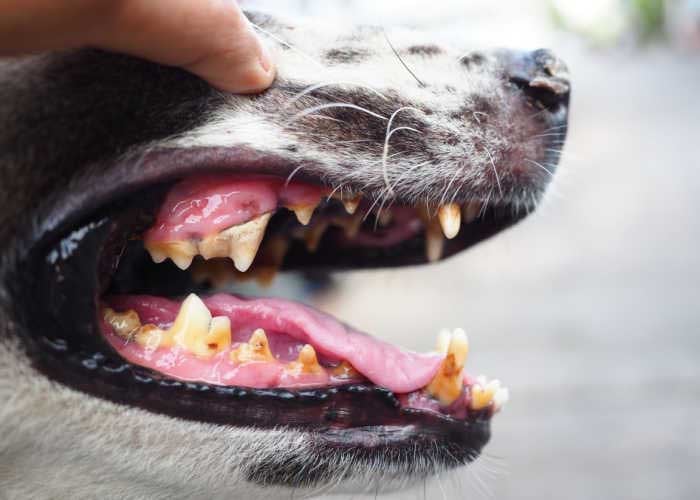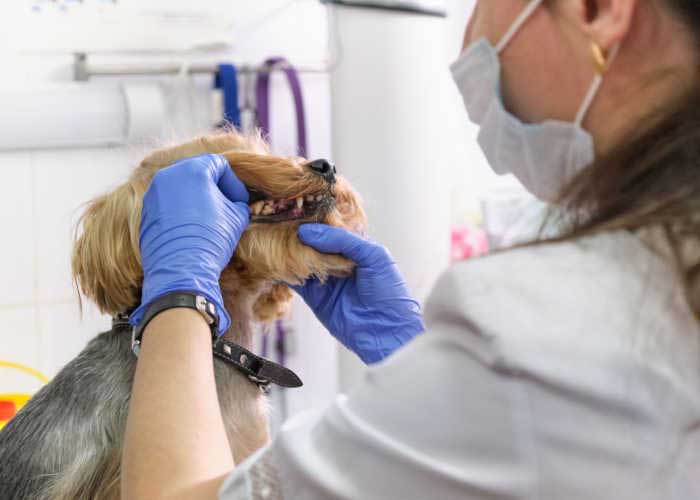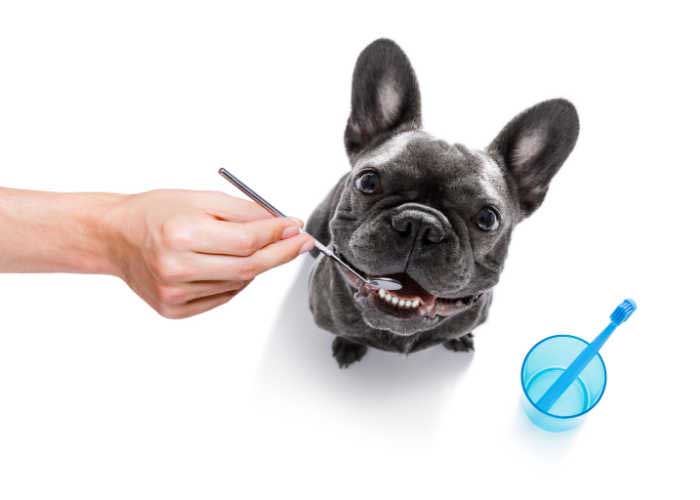Table of Contents
How do you distinguish healthy dog gums from unhealthy ones?
Although they are sometimes overlooked, a dog's gums are an equally vital component of their mouth as the teeth.
But only a few dog owners regularly care for their dog's oral health the same way they do their own.
They fail to understand the importance of gum care when it comes to maintaining their pet's well-being.
And so, in this article, we are going to find out more about the ideal gum color for your dog, gum issues to watch out for, and how to help your dog maintain healthy gums.
Healthy vs Unhealthy Dog Gums
Did you know that your dog's gums can provide crucial information about ITS health, depending on their color and condition?
Evaluating his gums to determine whether they are healthy or unhealthy and what the discoloration may signify can inform you about your pup’s general health.
Knowing what to look for and paying attention to symptoms will help you respond to a variety of canine health problems.
Here's how to differentiate healthy and unhealthy dog gums.
Healthy Dog Gums
Healthy gums have a pink color that is often compared to the color of bubble gum or cooked shrimp.
By pressing an area on their gums with your index finger, you can examine your dog's gums to see how well they are doing.
Within two seconds of releasing your grip, the color should return to pink after becoming white or pale pink.
The amount of time it takes for the gums to become pink again after you press on them is known as the capillary refill time, or CRT.
If this is the case, your dog is healthy and doesn't appear to have any serious health issues.
While most healthy dogs have pink gums, other breeds naturally have dark or black pigment in their gums or on the roof of their mouths.
The Chow Chow and Chinese Shar-Pei are two well-known breeds with black-pigmented gums.
It is simpler, however, to determine the color of the gums of dogs without pigmentation.
And so, it is important to check your dog’s gums regularly to learn what is normal for them because this color will serve as a basis for your dog's level of health.
Unhealthy Dog Gums
Compared to healthy dog gums’ wet and slippery to the touch, unhealthy dog gums can be dry and sticky that can cause pain or bleeding.
Gums that aren't in good health will look red and swollen, which could be an indication of gingivitis.
Other gum colors may potentially be a sign of underlying health issues.
Unhealthy gums can appear in any of the following ways:
Bleeding
Both local and systemic issues may result in bleeding gums.
Infections, mouth injuries, and foreign objects being trapped in the tissue are examples of local issues.
Systemic disorders can also cause bleeding, such as unusual bleeding caused by immune-mediated issues or toxins.
They can appear as round spots or as pinpoint hemorrhages known as petechiae.
Infected
Gum infections may be caused by an underlying systemic illness or by local infections brought on by decayed teeth.
When an infection is present, a dog's healthy gum color will be inconsistent.
Inflamed
Periodontal disease, which most frequently manifests as inflamed gums, is a common indicator of dental illness.
Typically, inflamed, swollen, and red gum tissue indicates infection.
Local infections, chemical burns, trauma, infectious diseases, and other factors can also cause inflammation.
Ulcered
Infections, trauma, or chemical burns can cause dogs to develop gum ulcers.
An ulcer will resemble an open, raw wound with an unevenly red surface. It might also have a smell.
What Do Unhealthy Dog Gums Look Like?
A range of conditions, including heart disease, liver failure, cancer, and dental disorders, can all be indicated by changes in gum color.
But it's crucial to know precisely what those changes indicate before you freak out about them.
Blue or Purple Gums
Cyanosis is the most common reason for blue gums in dogs, which is a condition that occurs when there is not enough oxygen flowing in the blood.
It may also indicate several disorders that could be fatal, including:
- Heart failure
- Blood clots in the lungs
- Pneumonia
- Choking
- Low blood pressure
- Infection within the chest cavity
- Respiratory problems
Yellow Gums
Typically, yellow gums are a sign of jaundice, which can be brought on by:
- Liver issues
- Damage to red blood cells
White or Pale Pink Gums
Pale gums may be a sign of low levels of red blood cells due to:
- Acute blood loss
- Anemia
- Shock or Trauma
Bright Red Gums
Gums that are cherry-colored may bleed quickly or cause pain for your dog.
One of the following conditions could be the cause of it, especially right along the gum line:
- Dental disease
- Certain types of cancer
- Poisoning or toxicity
- Overheating or heatstroke
- Elevated blood pressure
Growths on Gums
Breeds like boxers may be predisposed to gum overgrowth. These growths can be benign but at other times malignant or cancerous.
Pink, fleshy warts appear on the gums and other parts of the body when a dog has papillomatosis
This is a viral illness that can be easily transmitted from one dog to another.
Unlike other growths or tumors, these are often less concerning.
In addition to making a dog uncomfortable and unable to eat, other tumors can be malignant and result in major health issues.
Signs and Symptoms of Unhealthy Gums in Dogs
Bad breath and swollen gums are the two most usual signs of unhealthy gums in dogs.
Halitosis or bad breath in dogs may be a sign of gum infection, despite what you may have assumed as something your doggo just happens to have.
Although the smell might not be minty fresh, it also shouldn't be so awful to make you sick.
On the other hand, gingivitis or inflamed gums is the initial symptom of periodontal disease and is often brought on by a buildup of plaque and tartar along the gumline.
Defined as gingival inflammation, it is the only stage of periodontal disease that is actually reversible.
When tissues are destroyed due to periodontal disease, it is very difficult for them to recover or heal.
Depending on how severe the condition is, there can be a variety of gingivitis symptoms.
The gingival tissue will appear swollen and reddish. The inflammatory tissue can extend along several teeth in the mouth, not simply the edge next to a single tooth.
In more severe cases of gingivitis, there may be inflammation that spans the entire gingiva, affecting several teeth.
When touched or while the patient eats, the gingiva may even bleed.
How Dog Gum Infection Occurs
Dog gum disease, also known as periodontal disease in dogs, is brought on by oral bacteria that gradually deteriorate the teeth's supporting structures.
By the age of three, 80% of dogs start to exhibit symptoms of this illness but may be more prone to it due to poor dental care, heredity, and mouth structure, according to the American Veterinary Dental College.
Since the infection lurks beneath the gums, dogs don't typically show signs of the condition until it has evolved to an advanced level.
Wondering what causes this gum problem in dogs?
Well, you should know that a fuzzy, white substance known as plaque develops on the teeth when they aren't brushed.
Plaque is full of harmful bacteria that can accumulate and mineralize to turn into tartar, also referred to as dental calculus.
Tartar makes it easier for plaque to build up than the tooth's smooth, natural surface.
The plaque will eventually penetrate deeper into the tooth's supporting tissues, resulting in gum inflammation.
Then, the body's normal inflammatory response to the plaque will destroy the soft tissues and bones that support the teeth.
If the infection gets into the bloodstream, your pet’s heart, liver, and kidneys could be harmed.
RELATED: Gum Infection in Dogs: Signs, Causes & Treatments
Treating Gum Disease
Visit the vet if you think your dog may be experiencing gum issues.
Under general anesthesia, he will do a thorough dental examination and take dental X-rays to identify the best course of action.
Depending on the findings of the examination and X-rays, the recommended course of treatment may range from a thorough cleaning of the tooth's surface to remove plaque and tartar to periodontal surgery or even tooth extraction.
Immediate oxygen therapy is frequently required in addition to drugs tailored to the underlying ailment for gum problems caused by respiratory conditions.
A dog who has pale pink or white gums may require a blood transfusion because of anemia or blood loss.
Surgery may be required to remove them from the gums if growth is present.
To treat bleeding or bright red gums, dental care may be required, including cleanings, tooth extractions, medicines, and perhaps even cold therapy laser treatments.
A gum biopsy can be taken and sent to a lab if another disease (such as immunological disease or cancer) is suspected.
If you believe your dog has a dental illness, it is important to first have a veterinarian treat the condition before beginning an at-home gum-care regimen.
It may be too late for tooth brushing to be of any use if the pet already has a dental issue that could be linked to oral sensitivity. This will only aggravate the dog.
Starting your dog's preventative dental care at a young age when they still have a good number of healthy teeth in their mouth is therefore essential.
Preventing Gum Disease and Unhealthy Gums
You need to establish a good dental hygiene routine for your dog to maintain healthy gums.
Brushing your dog's teeth regularly with toothpaste and a toothbrush designed for dogs will help maintain their teeth and gums healthy.
Periodontal disease can be prevented by regularly brushing your dog's teeth to get rid of plaque.
According to studies, brushing at least once every other day provides the minimum benefit. Anything less than that is entirely useless.
There are a few alternatives if brushing your dog's teeth isn't something they're too keen on.
You can offer your dog rubber chew toys or natural bones like rawhide or knucklebones to gnaw on.
These two methods are excellent for cleaning food or plaque from the teeth, which will maintain the gums in good condition.
You may prove dental treats as well. Dental sticks and chews are designed to keep your dog's teeth clean and their breath fresh.
Furthermore, you should also schedule regular dental checkups.
A Comprehensive Oral Health Assessment and Treatment (COHAT) can be very beneficial for maintaining your dog's oral health as it offers a thorough oral examination and cleaning in addition to treating any current illnesses.
FAQs about Healthy vs Unhealthy Dog Gums
How can you tell if a dog has unhealthy gums?
The gums of your dog may be red, swollen, or sensitive, which are all indications that they may be infected.
As well as bleeding or puss-oozing gums, your dog may also have warm-to-the-touch gums.
Your dog might, under some circumstances, drool excessively or have poor breath.
If you observe any of these symptoms, it's crucial to visit a veterinarian as soon as you can.
Gum infections can be uncomfortable for your dog and, if untreated, can result in more severe health problems.
What do dehydrated dog gums look like?
When hydrated, a dog’s gums are normally a light pink color, but when dehydrated, they may seem darker pink or even red.
Dehydration can be an indication of disease or other underlying health problems, so it's crucial to keep an eye on your dog's hydration levels.
What should normal dog gums look like?
Although the color of a dog's healthy gums can vary from one to another, they should typically be salmon or bubble-gum pink in color.
It's nothing to worry about when a dog's gums are naturally speckled.
If your dog's gum color has changed though, this could indicate a more serious condition.
Healthy vs Unhealthy Dog Gums: Final Thoughts
Any household can benefit greatly from having a pet. However, taking care of them is a duty that must not be ignored.
They rely on us to take care of them, which goes for both their oral and general health.
Given that gum infections in dogs can be serious, the last thing you want is for your pooch to become ill.
Therefore, as owners, we act in a manner we think is best for their welfare.
Although canine dental disorders are common, our doggos don’t have to suffer from them.
Their bright smiles will last into their senior years with the help of diligent at-home dental care and regular dental checkups.
Yes, it takes commitment, but it is essential to maintain the health of your fluffy friend.





















